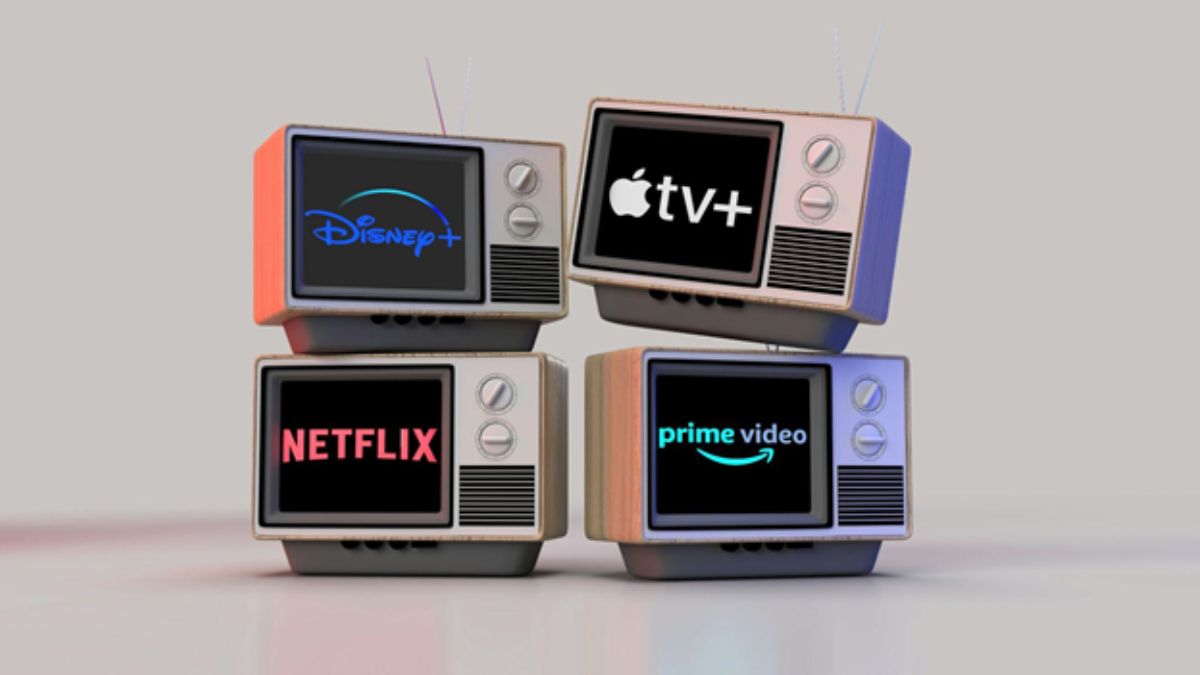TECHNOLOGY
Troubleshooting Tech: When Sites or Streaming Services Just Won’t Load

You click play on your favorite show, but nothing happens. You refresh a website for the tenth time, and it’s still broken. Your streaming service decides to buffer at the worst possible moment during the season finale.
These moments make you want to throw your device across the room. But before you do, know that most loading problems have surprisingly simple solutions. The trick lies in figuring out where the real problem hides.
Most people assume the website or streaming service is broken, which is rarely true. The culprit usually lurks much closer to home—in your connection, device, or browser’s memory.
The Real Reasons Things Stop Working
When Netflix freezes or your favorite blog won’t load, several invisible forces might be working against you. Understanding these helps you fix problems faster, rather than randomly clicking refresh.
Your internet connection might seem fine, but appearances can be deceptive. Wi-Fi signals weaken as you move away from your router. Your ISP might be throttling certain types of traffic. Other devices on your network could be hogging bandwidth. A teenager streaming TikTok videos upstairs can absolutely kill your documentary session downstairs.
DNS (domain name system) problems create particularly sneaky issues. Think of DNS as your internet address book—it translates “netflix.com” into the actual computer address where Netflix is hosted. When your ISP’s DNS servers act up, websites fail to load even though your internet works perfectly for everything else.
Your device accumulates digital baggage over time. Browsers store thousands of temporary files to make websites load faster, and apps cache data to reduce data usage. However, this seemingly helpful storage sometimes corrupts, creating conflicts that prevent new content from loading. Your phone might have plenty of storage space, but that doesn’t mean its temporary files aren’t causing chaos.
Server problems do occur, but less often than people think. When Instagram goes down globally, millions of people notice immediately. When your local ISP has routing issues, you might be one of only hundreds affected. Real server outages usually make tech news, whereas personal loading problems don’t.
Start With the Obvious Stuff
Before exploring complex solutions, check the basics that solve 80% of tech problems. These steps take five minutes but save hours of frustration.
Test your internet speed, not just whether “the internet works.” Use a speed test website on the same device where you’re having problems. Streaming HD video requires at least 5 Mbps, and 4K content requires 25 Mbps or more. If your speed test shows inconsistent results or frequent drops, your connection is the problem.
Restart your router properly—and we mean correctly. Unplug the power cable and wait thirty seconds. Your router requires some time to reset its memory and refresh the connection to your ISP. If you have separate modem and router boxes, restart both. Many people skip this step because it seems too simple, but routers accumulate errors like any other computer.
Completely shut down your streaming device for ten seconds. Don’t just put it to sleep or use the remote’s power button. Streaming sticks, smart TVs, and set-top boxes run continuously for months, building up minor glitches that interfere with video playback.
Check your account status if only one service is acting up. Maybe your payment didn’t go through, or perhaps you exceeded simultaneous stream limits. Try logging out completely and signing back in to refresh your session. Sometimes, services get confused about your subscription status.

Detective Work: Is It You or Them?
Once you’ve ruled out the obvious problems, determine whether the issue lies with your setup or the service itself. By doing this, you prevent wasting time trying to fix something that is broken on their end.
Search “[service name] down” or “[website] not working” in Google. You’ll quickly find reports from other users experiencing the same problem. Twitter and Reddit often provide real-time outage information faster than official status pages. A simple ‘is it down’ search tells you everything you need to know.
Also, try the duplicate content on a different device. If Netflix is working on your phone but not on your TV, the issue seems to be specific to the device. If it fails on both, your internet connection or Netflix is having problems.
Switch networks if possible and try mobile data instead of Wi-Fi. If everything works on cellular but not your home internet, contact your ISP. If both networks fail, the service itself is probably down.
Check the platform’s official status page. Primary services like YouTube, Netflix, and Twitter maintain status dashboards that report outages and maintenance windows. These pages often include estimated repair times, so you know whether to wait or keep troubleshooting.
Clean House: Browser and App Fixes
When your connection works fine but specific apps or websites misbehave, the problem usually lies in bad stored data. Modern browsers and apps save lots of information to make things faster, but this stored data sometimes conflicts with newer versions.
- Clear your browser’s cache and cookies: Do this for the problematic website. Don’t clear everything—just target the specific site causing trouble. Browsers offer options to clear data for individual websites, which fixes problems without logging you out of every other site you use.
- Update your browser or app: Old versions contain bugs that developers have already fixed. Streaming apps on smart TVs and phones update automatically, but sometimes you must manually check the app store for newer versions.
- Disable browser extensions temporarily: Ad blockers, VPNs, and privacy tools sometimes interfere with website functionality. Turn off all extensions, test if the site works, then re-enable extensions individually to find the troublemaker.
- Try incognito or private browsing mode: Incognito mode bypasses stored cookies and extensions, creating a clean testing environment. Stored data is definitely the culprit if websites work in private mode but not regular browsing.
For mobile apps, try the “force stop” option in your device’s app settings, then restart the app. By doing this, you clear temporary memory issues that cause freezing or endless loading screens.
When All Else Fails
Some problems require nuclear options. If gentle troubleshooting doesn’t work, these more drastic steps usually solve stubborn issues.
- Reset your network settings: You can find this option in your device’s Wi-Fi or network menus. It erases all saved Wi-Fi passwords and network configurations, forcing your device to build fresh connections. Only use this when other methods fail, because you’ll need to reconnect to Wi-Fi networks.
- Try a different DNS service: Switch from your ISP’s default DNS to public options like Google DNS (8.8.8.8) or Cloudflare (1.1.1.1). These services are often faster and more reliable than ISP-provided DNS servers.
- Contact customer support with specific information: Don’t just say “it doesn’t work.” Provide details: error messages, which device you’re using, when the problem started, and which troubleshooting steps you’ve already tried. Support teams are able to solve problems faster this way.
Stop the Cycle of Tech Frustration
Dealing with loading and streaming issues can be annoying, like when a page won’t refresh or a video keeps buffering. These problems often happen because of things like slow internet, full caches, or out-of-date software. The best way to solve them is by checking each possible cause one at a time. This saves you from guessing and helps you get things working faster.
If something isn’t loading, don’t just blame the website or app right away. First, check your internet connection, restart your router, and try clearing your cache. These quick steps can often solve the problem before you need to look for more help.
TECHNOLOGY
How to Prep and Apply Metal Paint Like a Pro: Tips & Tricks

Are you ready to transform your metal surfaces into stunning works of art? Whether it’s a rusty old gate, a worn-out piece of furniture, or even outdoor decor, applying metal paint can breathe new life into any object. However, achieving that flawless finish requires more than just slapping on some color. It demands careful preparation and the right techniques. Dive into this guide to discover how to prep and apply metal paint like a seasoned pro. With the right approach, you can take on any project with confidence and achieve results that will make everyone do a double-take!
The Importance of Proper Prep Work
Proper prep work is the backbone of a successful metal painting project. Without it, even the best paint can falter and peel away over time.
Cleaning is paramount. Dust, grease, and rust can create barriers that prevent proper adhesion. A thorough cleaning ensures your paint will stick to the surface rather than flake off at the first sign of wear.
Sanding comes next. This step smooths out imperfections and provides texture for better grip. It’s not just about aesthetics; a well-prepped surface allows paint to adhere more securely.
Don’t overlook priming either. Using a good primer seals any underlying materials and creates an even base for your topcoat. This layer enhances durability against weathering and corrosion—essential for outdoor projects.
Taking these steps seriously sets you up for success, resulting in longer-lasting finishes that truly shine!
Materials Needed for Metal Painting
To achieve that flawless finish with metal paint, having the right materials is essential. Start with a high-quality metal primer; this prepares the surface and enhances adhesion.
Sandpaper or a sanding block will help you smooth out any rough edges on your metal piece. Don’t forget safety gear! Gloves and goggles are crucial to protect yourself from dust and fumes.
Next on your list should be clean cloths for wiping down surfaces after sanding. A tack cloth can capture fine particles effectively before painting begins.
When it’s time to apply the paint, use either an airless sprayer or a brush designed for metal applications. These tools ensure even coverage without streaks.
Consider investing in some drop cloths to keep your workspace tidy while preventing drips and spills from marring other surfaces near you. Every detail matters when working towards that professional look!
Step-by-Step Guide to Preparing Metal Surfaces
Start by cleaning the metal surface thoroughly. Use a mixture of soap and water to remove dirt, grease, and grime. A clean surface ensures better adhesion for your metal paint.
Next, inspect the area for rust or old paint. If you find any flaky spots, use sandpaper or a wire brush to remove them completely. This step prevents future peeling.
After sanding, wipe down the surface with a cloth dampened in mineral spirits. This removes dust and prepares the metal for primer application.
Once dry, apply a suitable primer designed specifically for metal surfaces. Priming enhances durability and provides an extra layer against corrosion.
Let the primer dry fully before moving on to painting. Patience is key here; rushing this step can lead to uneven results later on during painting.
Tips for Applying Metal Paint
When applying metal paint, always start with a clean slate. Dust and debris can ruin your finish. A quick wipe down ensures better adhesion.
Consider the weather too. Ideal conditions are low humidity and mild temperatures. Paint in the shade to avoid direct sunlight, which can dry your paint too quickly.
Use even strokes for a smooth application. Brush or spray lightly; it’s better to apply multiple thin coats than one thick layer that may drip or run.
Don’t forget about ventilation! If you’re working indoors, ensure good airflow to prevent fumes from lingering.
Allow adequate drying time between coats. Rushing this step might spoil all your hard work. Patience pays off when aiming for that flawless finish on metal surfaces.
Common Mistakes to Avoid
Many DIY enthusiasts rush into painting without adequate preparation. Skipping the cleaning step can lead to poor adhesion and a rough finish.
Another common mistake is using the wrong type of metal paint. For instance, choosing interior paint for outdoor projects leads to peeling and fading over time.
People often underestimate drying times between coats. Applying a second layer too soon creates an uneven texture or causes drips.
Neglecting safety measures can have serious consequences. Always wear gloves and masks when working with solvents or spray paints.
Not testing your chosen color on a small area first can result in disappointment later on. A sample swatch allows you to see how the paint interacts with the metal surface under different lighting conditions.
Top Brands and Types of Metal Paint
When it comes to metal paint, several brands stand out for their quality and performance. Rust-Oleum is a household name known for its durable finishes and extensive color range. Their products are perfect for both indoor and outdoor projects.
Another reputable brand is Krylon, which offers quick-drying formulas that make painting metal surfaces easy and efficient. Their spray paints are especially popular among DIY enthusiasts.
For those seeking specialty options, consider Hammerite. This brand specializes in paints that provide a hammered finish while offering excellent rust protection.
If you’re looking for eco-friendly choices, Behr has water-based metal paints that deliver impressive results without harmful solvents.
Each of these brands boasts unique features catering to various needs, ensuring your next project will turn out beautifully with the right product.
Conclusion: Achieving a Professional Finish
Achieving a professional finish with metal paint requires careful attention to detail. Proper preparation is key; it sets the foundation for any successful project. By following the right steps, you can enhance adhesion and durability, ensuring your painted metal surfaces withstand the test of time.
Selecting high-quality materials makes a significant difference. Always choose top brands that are known for their performance in varying conditions. The application technique matters too—smooth strokes and even coverage will elevate your results.
Avoiding common pitfalls will save you time and effort in the long run. By steering clear of mistakes such as skipping prep work or applying too thickly, you ensure that your finished product looks polished.
With these tips and tricks under your belt, you’re well on your way to transforming dull metal surfaces into stunning features. Embrace the process and enjoy seeing how proper techniques lead to outstanding outcomes with metal paint!
TECHNOLOGY
Why TrendzGuruji.me is the Go-To Source for Trend Enthusiasts

Introduction to TrendzGuruji.me
Welcome to the vibrant world of TrendzGuruji.me, where trends come alive! If you’re a trend enthusiast searching for the latest buzz and hottest topics, you’ve just stumbled upon your new favorite destination. This platform is designed to keep you in the know about everything from fashion fads to tech innovations. Whether you want to stay ahead of the curve or simply enjoy discovering what’s fresh and exciting, TrendzGuruji.me has got your back. Dive into this dynamic space filled with engaging content that sparks inspiration and ignites conversation among like-minded individuals. Get ready to explore all that trendzguruji.me has to offer!
Comprehensive Coverage of the Latest Trends
TrendzGuruji.me stands out with its extensive coverage of the latest trends across various fields. Whether it’s fashion, technology, or lifestyle, this platform ensures you’re always in the know.
The team curates content that reflects what’s hot and happening right now. They sift through noise to bring only the most relevant information directly to your screen.
Readers can explore diverse categories tailored to their interests. Each post is designed not just for entertainment but also for insight.
This allows trend enthusiasts to dive deep into topics they love while discovering new ones along the way. Fresh updates keep users engaged and coming back for more.
With such a broad spectrum of offerings, TrendzGuruji.me positions itself as an essential resource for anyone keen on staying ahead of the curve in today’s fast-paced world.
Engaging and Informative Content
At TrendzGuruji.me, content isn’t just a string of words. It’s an experience designed to captivate and inform. Whether you’re exploring fashion, technology, or lifestyle trends, each article dives deep into the essence of what’s hot right now.
The writing style is approachable yet insightful. You’ll find facts interspersed with anecdotes that make complex topics digestible and relatable. This blend keeps readers coming back for more.
Visual elements complement the text beautifully. Striking images and infographics not only enhance understanding but also elevate engagement levels.
Readers can expect fresh perspectives along with practical tips they can apply immediately in their lives. Content here doesn’t just scratch the surface; it encourages curiosity and exploration into new areas of interest.
Expert Contributors and Influencers
At TrendzGuruji.me, the pulse of modern trends beats loud and clear, thanks to our expert contributors. These individuals bring a wealth of knowledge and experience from various fields. Their insights enrich every article and feature.
Influencers play a pivotal role in shaping perspectives on current trends. They have their fingers on the pulse of what’s hot right now. Collaborating with these voices ensures that content remains relevant and engaging.
Our team spans diverse backgrounds—from fashionistas to tech aficionados—each adding unique flair to discussions. Readers benefit from well-rounded viewpoints that inspire curiosity and exploration.
This blend of expertise fosters an environment where trend enthusiasts can learn and grow together. Engaging with thought leaders creates an enriching experience that keeps visitors coming back for more insight into the ever-evolving world around us.
Interactive Community of Trend Enthusiasts
At TrendzGuruji.me, the community aspect is as vibrant as the trends themselves. Engaging with fellow trend enthusiasts transforms your experience from passive reading to active participation.
Members can share insights, swap ideas, and discuss their favorite topics in a welcoming environment. This interaction fosters connections that go beyond just sharing content; it cultivates friendships rooted in shared interests.
The platform also hosts discussions and polls to gauge what’s hot right now. Whether you’re an expert or a newcomer, there’s always something fresh to learn from others’ perspectives.
You’ll find various forums where creativity thrives—members showcase their own takes on popular trends or propose new ones for consideration. Every voice matters here, making it a dynamic hub of inspiration and innovation.
Joining this interactive community enhances not only your knowledge but also enriches your journey through the ever-evolving landscape of trends.
Personalized Trend Recommendations
TrendzGuruji.me excels at providing personalized trend recommendations tailored to your interests. By analyzing user preferences, the platform curates content that resonates with you.
Imagine receiving updates about fashion, tech, or lifestyle trends that truly align with your tastes. This feature sets TrendzGuruji.me apart from other platforms. It ensures you’re not just consuming random information but discovering what genuinely excites you.
The recommendation system is intuitive and constantly evolving. As trends shift and new topics emerge, so do the suggestions presented to you.
Engagement is key; users can easily interact with their recommended content through likes and shares, enhancing the experience further.
With such a tailored approach, exploring fresh ideas becomes effortless and enjoyable on TrendzGuruji.me!
Conclusion: Join the TrendzGuruji.me community today!
TrendzGuruji.me is more than just a website; it’s a thriving community for anyone passionate about trends. With its comprehensive coverage, you’ll never miss out on what’s hot in fashion, technology, lifestyle, and beyond. The site’s engaging content keeps readers informed and entertained at the same time.
There are expert contributors providing valuable insights that help shape your understanding of emerging trends. Plus, with an interactive community ready to share ideas and experiences, you’ll always find someone who resonates with your interests.
If you’re looking for personalized trend recommendations tailored to your preferences, TrendzGuruji.me has got you covered. It’s all about making sure you stay ahead of the curve while enjoying the journey.
Join us today and immerse yourself in everything that TrendzGuruji.me has to offer! Whether you’re here for inspiration or information, there’s something waiting just for you. Don’t miss out on being part of this vibrant trend-loving family!
TECHNOLOGY
Top 5 Reasons to Explore NJAV for Your Next Project

Introduction to NJAV
When it comes to executing your next project, finding the right partner can make all the difference. Enter NJAV—a name that stands out for its commitment to quality and innovation. Whether you’re embarking on a small-scale initiative or a large enterprise venture, NJAV has everything you need to turn your vision into reality. With a blend of advanced technology, expert support, and cost-effective solutions, exploring NJAV could be one of the smartest decisions you’ll make. Ready to discover why so many choose NJAV? Let’s dive into the top five reasons this dynamic company should be at the forefront of your project planning!
The Benefits of Using NJAV for Your Project
When it comes to project execution, NJAV stands out for various reasons. One major benefit is its adaptability. Whether your project scope spans small renovations or large-scale constructions, NJAV tailors solutions that fit your specific needs.
Another advantage lies in their commitment to quality. Utilizing industry best practices ensures that every aspect of the project meets high standards. This attention to detail minimizes risks and enhances overall outcomes.
Communication is also a strong point with NJAV. Their open channels foster collaboration between teams, making adjustments seamless throughout the project’s life cycle.
Additionally, leveraging NJAV means accessing an extensive network of resources and materials. This broad reach translates into timely deliveries and superior results without compromising on quality or budget constraints.
Choosing NJAV not only streamlines processes but also elevates your project’s potential through expert guidance and innovative approaches.
Advanced Technology and Equipment
NJAV stands at the forefront of innovation. Their commitment to integrating advanced technology ensures that every project meets high standards.
Equipped with state-of-the-art machinery, NJAV enhances efficiency and precision in execution. From cutting-edge software tools to innovative construction techniques, they leverage the latest advancements for optimal results.
The use of drones for site assessments exemplifies NJAV’s forward-thinking approach. These aerial devices provide real-time data, enabling better planning and decision-making.
Moreover, their investment in sustainable technology showcases a dedication not only to quality but also to environmental responsibility. Energy-efficient equipment reduces waste while maximizing productivity.
Clients benefit from real-time updates through integrated project management systems. This transparency fosters communication and builds trust throughout the project’s lifecycle.
With such resources at their disposal, NJAV is well-prepared to tackle even the most complex challenges head-on.
Expert Team and Support Services
When you choose NJAV, you’re not just hiring a service; you’re gaining access to a dedicated team of experts. Each member brings unique skills and extensive experience to the table. This diversity fosters innovation and ensures that every project receives the attention it deserves.
Communication is vital in any endeavor, and NJAV excels in this area. The support staff is always ready to address your questions or concerns promptly. Their commitment to transparency builds trust and keeps everyone aligned throughout the project lifecycle.
Additionally, ongoing training programs ensure that the team stays updated on industry trends and best practices. This dedication translates into superior outcomes for your projects.
With NJAV’s expert team behind you, rest assured that professional guidance will be available at each step of your journey. Their collaborative approach leads to tailored solutions designed specifically for your needs.
Cost-Effective Solutions
Cost-effective solutions are at the heart of what NJAV offers. Every project has a budget, and we understand that balancing quality with affordability is crucial.
By leveraging innovative approaches and efficient methodologies, NJAV ensures you get maximum value for your investment. Our team meticulously analyzes each aspect of your project to identify potential savings without sacrificing excellence.
Moreover, our strategic partnerships allow us to access high-quality materials at competitive prices. This means you benefit from top-tier resources while keeping costs in check.
With NJAV, transparency is key. We provide detailed estimates upfront so you know exactly where every dollar goes. There are no hidden fees or surprises along the way; just straightforward pricing designed to meet your needs.
Choosing NJAV means choosing smart spending that drives results—making it an ideal choice for both small and large-scale projects alike.
Client Success Stories
At NJAV, client success stories are a testament to our commitment and expertise. Each project tells a unique narrative of innovation and collaboration.
One notable example is a large-scale infrastructure development where we partnered with local authorities. Our advanced solutions significantly reduced project timelines while maintaining high-quality standards.
Another success featured an eco-friendly building initiative that leveraged our state-of-the-art technology. This approach not only met but exceeded sustainability goals, earning recognition in the industry.
Clients frequently express their satisfaction through testimonials highlighting responsive support throughout their journey with us. Their achievements become part of our story, showcasing how NJAV transforms visions into reality.
These real-world applications demonstrate the effectiveness of choosing NJAV for your projects. We take pride in these partnerships that inspire trust and drive results across diverse sectors.
Conclusion: Why NJAV is the Best Choice for Your Next Project
When it comes to choosing the right partner for your next project, NJAV stands out as a premier option. Their commitment to advanced technology and state-of-the-art equipment ensures that you receive top-notch results tailored to your specific needs.
The expert team at NJAV brings years of experience and specialized knowledge, providing you with unparalleled support throughout the project lifecycle. You can trust their professionals to guide you through every step, ensuring that all aspects are handled with care.
Cost-effective solutions make NJAV an attractive choice for businesses looking to maximize value without sacrificing quality. They understand budget constraints and work diligently to deliver exceptional outcomes within financial parameters.
Client success stories speak volumes about NJAV’s dedication and expertise. Satisfied customers have seen tangible benefits from their collaboration, highlighting the effectiveness of their approach in various industries.
Choosing NJAV means opting for reliability, innovation, and excellence in execution. It’s clear why so many organizations turn to them when embarking on new projects. With a solid reputation built on success, they are ready to elevate your project experience like no other provider can.
-

 TECHNOLOGY5 months ago
TECHNOLOGY5 months agoTop 10 Must-Read Stories from Kristen Archives You Can’t Miss
-

 TECHNOLOGY11 months ago
TECHNOLOGY11 months agoSky Bri Net Worth Revealed: How She Built Her Financial Empire
-

 TOPIC1 year ago
TOPIC1 year agoBasement Renovation Contractors: How They Tackle Structural Issues During Renovations
-

 TOPIC8 months ago
TOPIC8 months ago5 Reasons the //Vital-Mag.Net Blog Dominates Lifestyle
-

 TOPIC6 months ago
TOPIC6 months agoTop 10 Articles from the ://Vital-Mag.net Blog That You Can’t Miss
-

 CRYPTO9 months ago
CRYPTO9 months agoCrypto30x.com Review: Is It the Right Platform for You?
-

 BUSINESS5 months ago
BUSINESS5 months agoTraceLoans Explained What You Need to Know
-

 ENTERTAINMENT3 months ago
ENTERTAINMENT3 months agoNHentai.NEF: Navigating the Popular Hentai Archive with Ease
